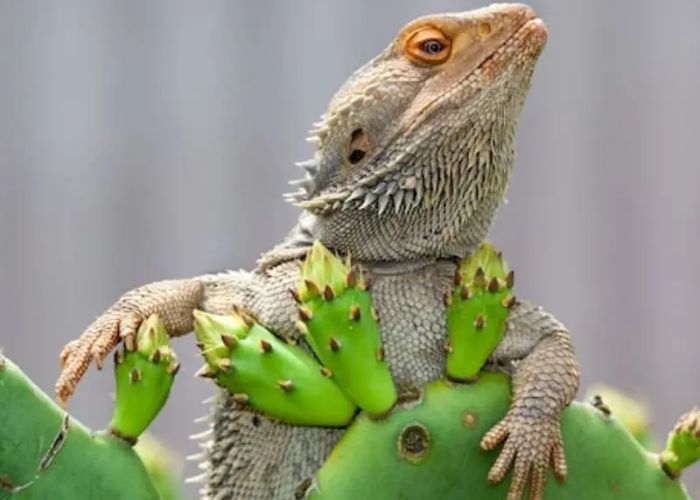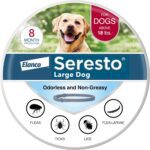Bearded dragons, which are popular reptile pets, require a balanced diet to keep their friendly nature and unique appearance. As conscientious pet owners, it is our duty to learn about the many food options available to our animals. People are interested in the opalitos, which are the juvenile pads or cladodes of the prickly pear cactus (Opuntia species). The nutritional components, potential advantages, and potential drawbacks of feeding bearded dragons nopalitos will be examined in this study. Let’s read below “Can Bearded Dragons Eat Nopalitos.
Understanding Bearded Dragon Nutrition:
Bearded dragons, being omnivores, get their food from a wide variety of sources, including as plants and insects. Giving them a well-rounded diet will ensure their health, growth, and longevity to the fullest. The precise balance of proteins, fats, vitamins, and minerals is essential for their health, which is why their nutritional needs are complex.
To promote overall growth and muscular development, proteins derived from insects and plants are necessary. Immune system function, bone density, and metabolic rate are all dependent on vitamins and minerals, as opposed to lipids, which provide energy and assist in numerous physiological functions.
Introducing Nopalitos to the Bearded Dragon Diet:
The high nutrient content of nopalitos suggests they could be a healthy addition to bearded dragons’ diet. Not only are these young cactus pads low in calories and full of fibre, but they are also an excellent source of Vitamins:
To keep bearded dragons healthy and strong, vitamin C is a must-have.
Vitamin A is a must-have for everyone’s reproductive health, skin, and eyes.
Minerals: Calcium is crucial for the development of fully formed skeletons and for preventing metabolic bone diseases.
Potassium is essential for normal cellular fluid homeostasis and muscular contraction and relaxation.
Fiber Because of their high fibre content, nopalitos can help with digestion and keep constipation at bay.
Benefits of Feeding Nopalitos:
Hydration: For bearded dragons kept as pets in dry locations, nopalitos are an excellent method to keep them hydrated.
Low-Calorie Nutrient Boost: Bearded dragons can benefit from nopalitos, which are nutrient dense and low in calories.
Variety in Diet: like nopalitos, in your diet can help break up nutritional monotony and encourage a more varied consumption of nutrients.
Potential Risks and Considerations:
Although nopalitos are a nutritious option for bearded dragons, there are a few considerations to bear in mind before feeding them.
Oxalates: The oxalates in nopalitos can crystallise when they bond to calcium. Overconsumption of oxalates might lead to the formation of kidney stones. But, the oxalate content of nopalitos is usually lower than that of other vegetables.
Phosphorus to Calcium Ratio: Bearded dragons require an ideal calcium-to-phosphorus ratio for robust bone development. To avoid disrupting this balance, the introduction of nopalitos should be approached with care.
Preparation: Make sure the nopalitos are very clean and devoid of any spines or thorns that could irritate your digestive system or throat before you consume them.
Moderation: gradually give nopalitos to your bearded dragon to see how it reacts and prevent gastrointestinal issues.
Feeding Guidelines:
Be careful to follow these procedures to ensure the health of your bearded dragon when you introduce nopalitos to their diet:
- Variety is Key: Nopalitos should include insects, leafy greens, and other vegetables in their diet.
- Proper Preparation: The nopalitos should be thoroughly cleaned and prepared before serving, and any spines or thorns should be removed.
- ModerationConsolidate nopalitos modestly into a balanced eating routine. Overconsumption of any one food can prompt healthful inadequacies.
- Observation: Look out for indications of gastrointestinal misery, torment, or social changes in your unshaven winged serpent subsequent to acquainting nopalitos with its eating routine.
Conclusion:
Can Bearded Dragons Eat Nopalitos
Fittingly adding nopalitos to the food of unshaven winged serpents can improve their hydration and supplement consumption. If you have any desire to change your hairy winged serpent’s eating regimen, you really want to contemplate its particular dietary necessities, the food’s profile, and any dangers it could confront.
See additionally Can Hares Eat Beets? What You Really Want to Be aware!Pet people can improve at of dealing with their creatures’ well-being and delight by taking care of them a fluctuated and adjusted diet. The best person to ask for advice on what to feed your bearded dragon is a veterinarian who specializes in reptiles. I really want to believe that you like perusing “Can Whiskery Mythical beasts Eat Nopalitos”.







